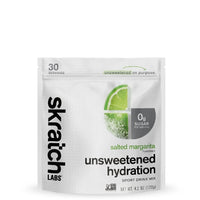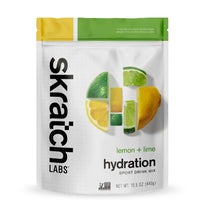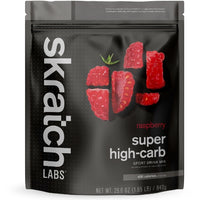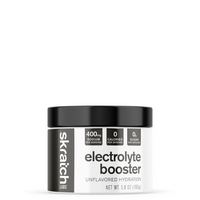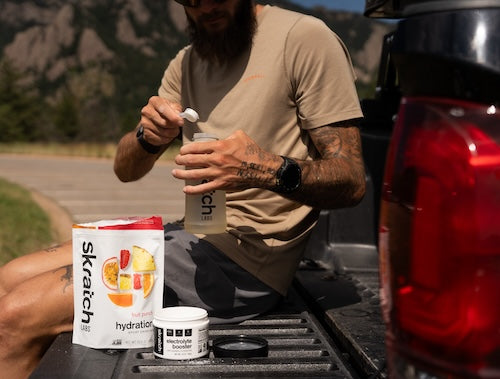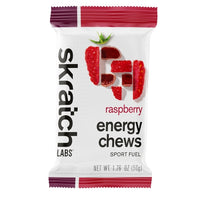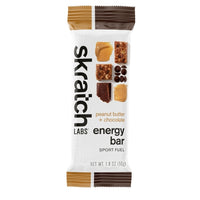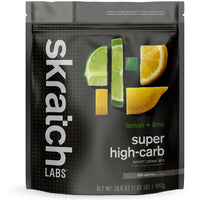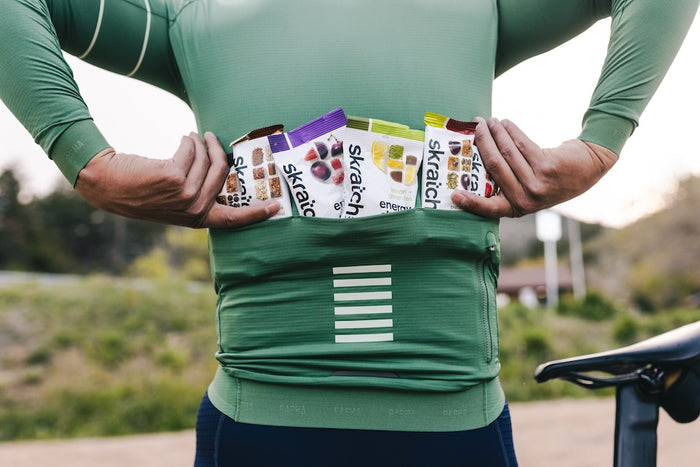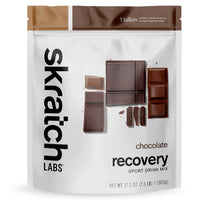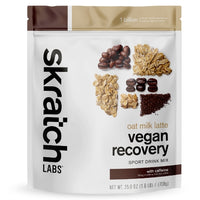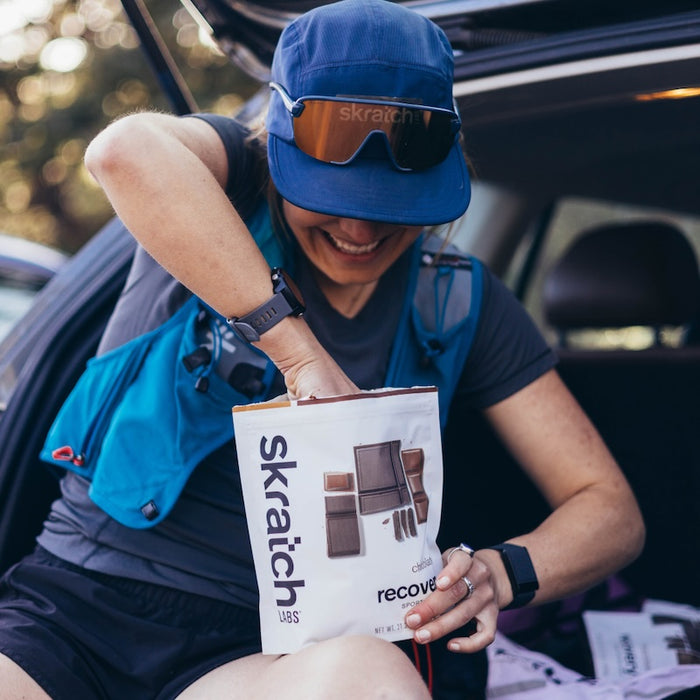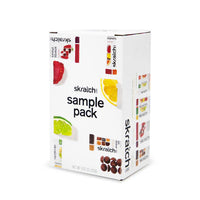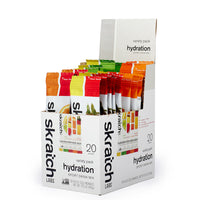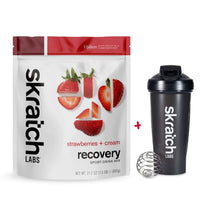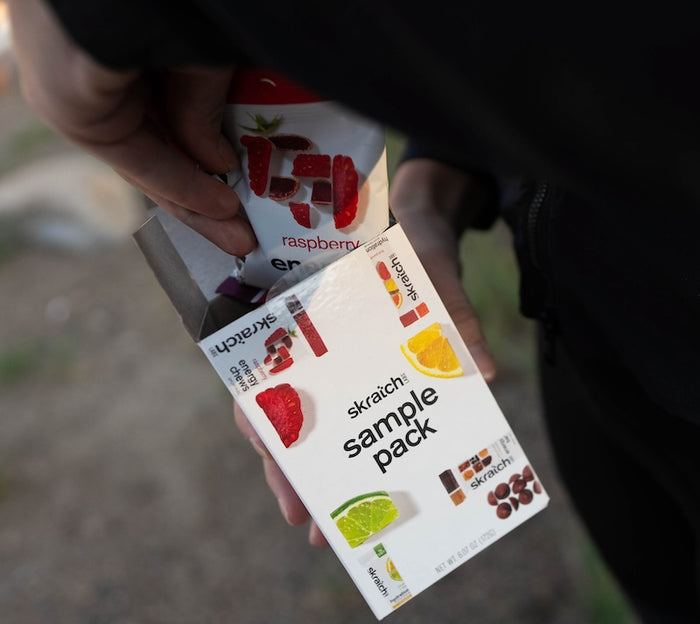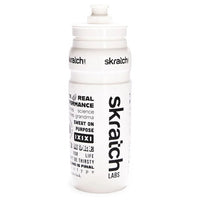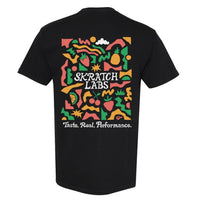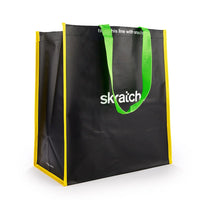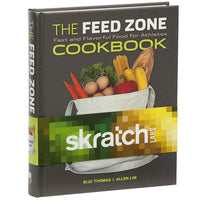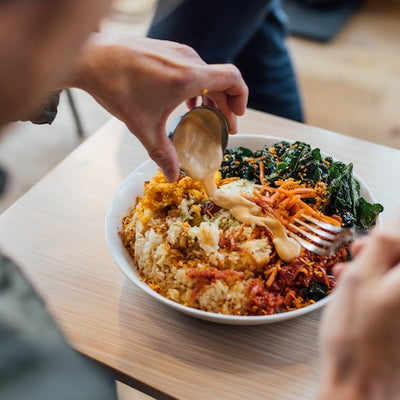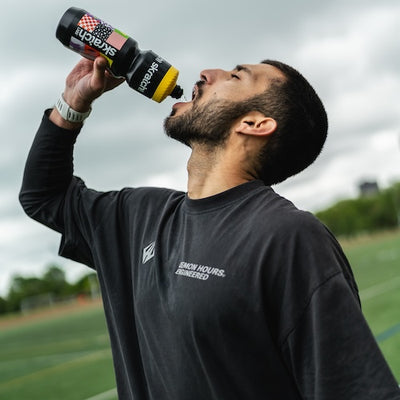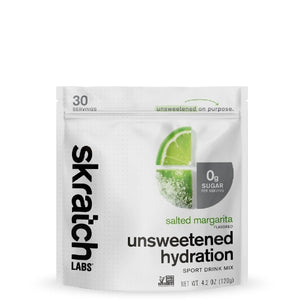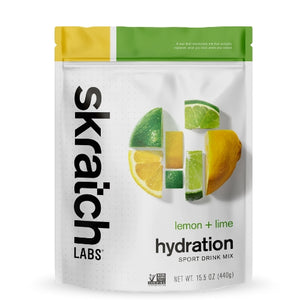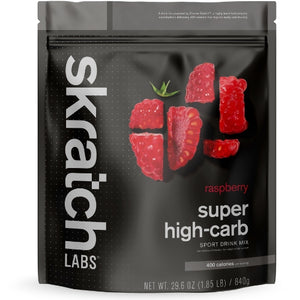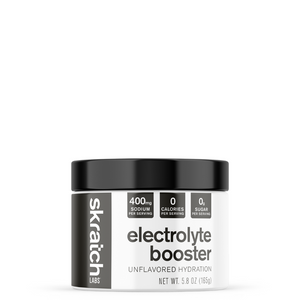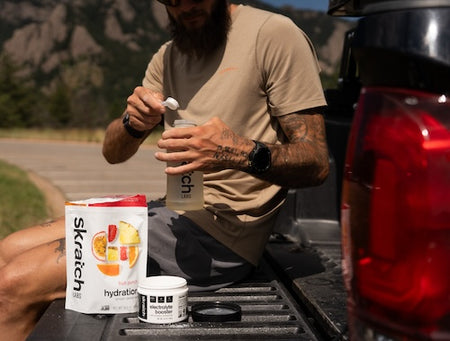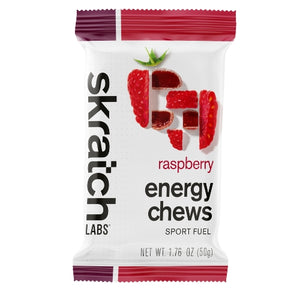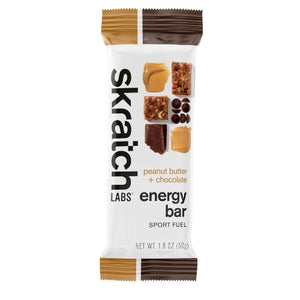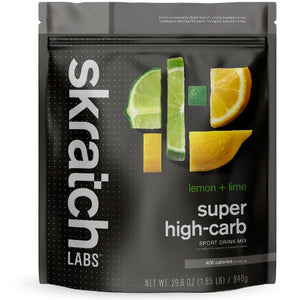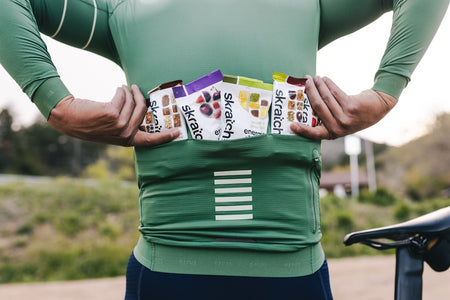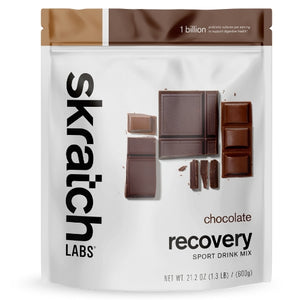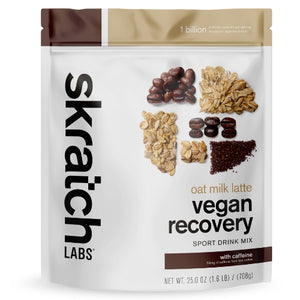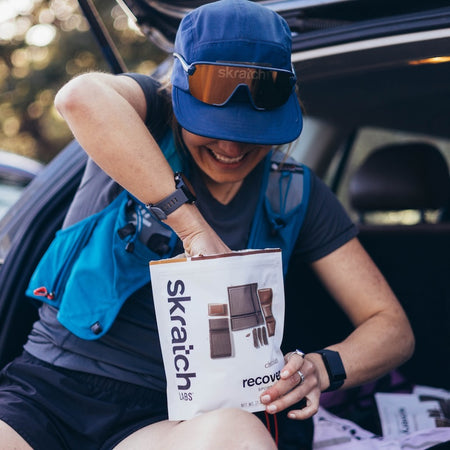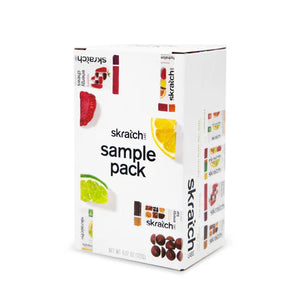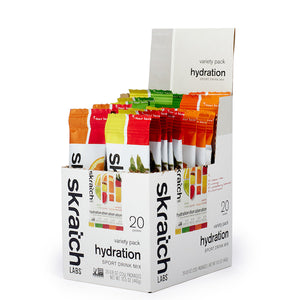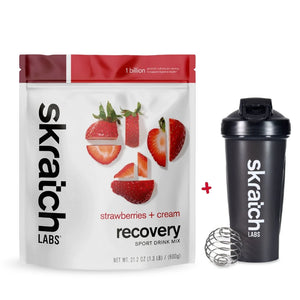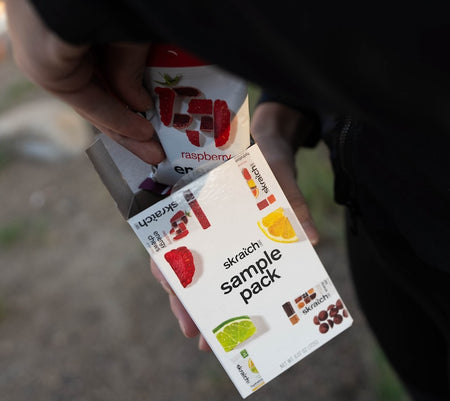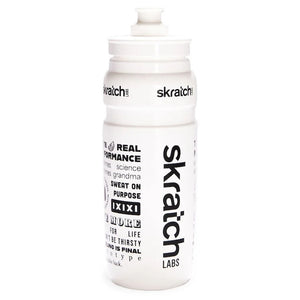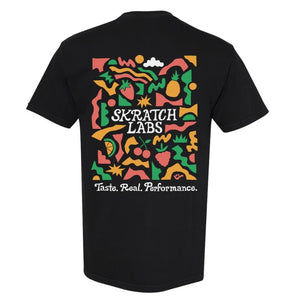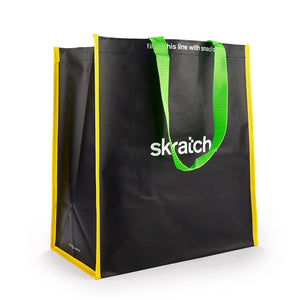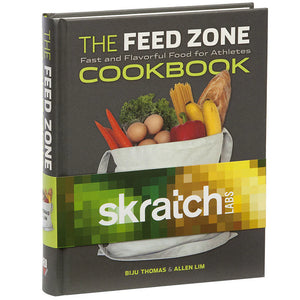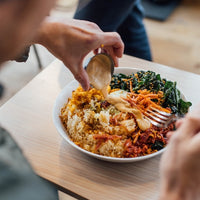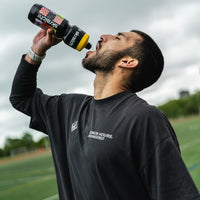Osmolality & Hydration: Why It Matters for Your Sports Drink
When it comes to fueling your performance, hydration and fueling isn’t just about drinking—it’s about how your body absorbs the fluids, carbohydrates, and electrolytes you need to keep going faster and farther.
Enter osmolality. Here is the science on osmosis, osmolality, and why Skratch Labs hydration products are engineered with real science, for real results.

Osmosis vs. Osmolality: What’s the Difference?
Osmosis: the movement of fluids…..
- The movement of water molecules across those semipermeable membranes in your body from a region of lower solute concentration to a region of higher solute concentration.
- This process aims to equalize the concentration of solutes on both sides of the membrane. Balance is the name of the game here.
Why do you care? In the context of hydration, osmosis plays a crucial role in how your body absorbs fluids and maintains proper cellular function to keep you going!
Osmolality: what is in your fluids…..
- The measure of solute concentration in a solution, expressed as the number of particles (osmoles) per kilogram of solvent (water).
- In simpler terms, it's how many dissolved particles like sugars, sodium, and electrolytes are in a fluid. The "concentrated" everyone keeps talking about.
Why do you care? Osmolality directly affects how quickly and efficiently your body can absorb fluids during exercise and other activities. This literally impacts how quickly (or not) you can rehydrate and refuel during training and races.

Understanding Osmolality Amount: The Key to the Perfect Sports Drink
Not all sports drinks are created equal, and the wrong concentration can mean the difference between proper hydration, gut distress, and performance.
Ever chug a sports drink and still feel thirsty? That’s osmolality at work. The wrong hydration concentration can sit heavy in your stomach or even dehydrate you further. Can you imagine you're in the middle of a race you trained long and hard for only to be sidelined feeling more dehydrated or with a stomachache?
To maximize your performance, consider a sports drink with proper osmolality. This ensures:
- Fuels Faster Absorption – Moves fluids quickly from your gut into your bloodstream, ensuring rapid hydration.
- Prevents Gut Discomfort – Minimizes GI distress by maintaining the right balance of solutes. Not too much, not too little, nothing that isn’t lost in sweat.
- Delivers Consistent Energy – Provides enough carbs and electrolytes to sustain performance without overload!
For reference, blood osmolality typically ranges between 275-295 mOsmol/kg. The most effective sports drinks remain within or slightly below this range for optimal efficacy.
The Impact of Incorrect Sports Drink Concentrations on Athletic Performance:
This is where hypertonic and hypotonic solutions come into play –and not using them during training and races. The osmolality of your drink determines whether fluids are efficiently absorbed or if they cause discomfort, dehydration, or under-fueling. Getting this balance right is key to optimizing hydration and performance.
Breaking Osmolality Down.
- Hypertonic Solutions: Drinks with high osmolality (too many solutes) can slow down gastric emptying & gut absorption. Your body might pull water from your bloodstream to compensate, potentially leading to dehydration and gastrointestinal discomfort.
- Dehydration: When your body loses more fluids than it takes in, dehydration occurs, leading to decreased performance, fatigue, and heat-related illnesses.
- Hypotonic Solutions: On the flip side, if your drink is too diluted (low osmolality), it could speed up absorption and emptying, but you won't receive enough fuel or electrolytes to sustain your performance.
- Hyponatremia: In rare cases, overhydration with plain water can dilute your body of electrolytes like sodium, leading to a dangerous condition called hyponatremia. This is dangerous and shouldn’t be taken lightly.
- Electrolyte Balance: Electrolytes like sodium, potassium, and magnesium are essential for muscle function and nerve transmission. A well-formulated sports drink contains an appropriate balance of electrolytes to replace those lost through sweat and maintain optimal performance.
- The Dreaded Bonk: The type and concentration of carbohydrates in a sports drink can impact its energy delivery. Carbohydrates provide a readily available source of energy, but high concentrations can slow gastric emptying and fluid absorption. Sports drinks with optimal carbohydrate concentration can help prevent underfueling and bonking, ensuring your body stays properly fueled.
Pro Tip: What is the optimal carbohydrate you ask? Maltodextrin and Cluster Dextrin (highly branched cyclic dextrin) are both fast-digesting carbohydrate sources, but they differ in structure and function. Maltodextrin is a simple linear chain of glucose molecules, a less complex carbohydrate that spikes blood sugar quickly, making it ideal for rapid energy but can cause crashes and for some GI distress in large amounts. Cluster Dextrin is a more complex branched structure (think one of those stringy cyclic bouncy balls), allowing for a slower more sustained release of energy with minimal impact on blood sugar and digestion. Cluster Dextrin also has a lower osmolality, meaning it clears the stomach faster while reducing GI distress, making it a better option for long-duration endurance efforts. The key is to test and see what works for you.
The Sweet Spot: By understanding the concentration of your sport drink concepts, a well-formulated sports drink isn't just about taste—it's about science. A properly formulated sports drink balances osmolality to optimize hydration and energy delivery without causing discomfort, and Skratch has done the hard work for you with science-driven formulations in all of our products.

Why Water Alone Won’t Cut It
Plain water has an osmolality close to zero, making it easy to absorb, but it lacks the essential electrolytes and carbohydrates needed for endurance performance making it not always the ideal choice. Over-hydrating with plain water can dilute sodium levels in the body, increasing the risk of hyponatremia—a serious condition that can lead to confusion, fatigue, and even medical complications. Additionally, water alone doesn't provide the carbohydrates needed to fuel continued sustained performance. The ideal hydration solution provides balanced water, electrolytes, and appropriate amounts of carbohydrates to maintain fluid balance and fuel your muscles.
Okay, but what about food?
If your goal is calorie replacement during intense exercise, how do you fuel without just drinking your calories? The simple answer: eat real food. That being said, what you eat matters—stick to options with minimal ingredients, low fat, and low fiber to avoid gut issues.
When you chew and swallow food, your stomach gradually breaks it down before releasing nutrients into the small intestine at a steady pace. This controlled digestion process prevents a rapid influx of highly concentrated nutrients that could disrupt water absorption. The simple analogy is instead of trying to get 200 cars on the highway all at once and causing a big traffic jam, eating solid food helps to allow a steady stream of cars (calories) onto the highway (small intestine) in a way that keeps traffic flowing.
That said, all calorie sources—liquid or solid—impact osmotic pressure in the gut. The key is balancing energy intake with hydration (trial and error to find your best amounts). Ask yourself: how fast are you losing water through sweat, and how quickly are you burning through fuel? Managing both is the real game-changer.
How Skratch Labs Nails the Osmolality Sweet Spot
At Skratch Labs, we follow those important rules stated over and over again, and believe that every sip counts. Skratch Labs products aren’t just based on theory—we test them with elite athletes in real-world conditions, starting from the Tour de France to ultra-endurance events.
Our hydration lineup isn’t just about the types or amounts of carbohydrates and electrolytes, every ingredient affects the equation. Artificial sweeteners, preservatives, flavoring agents, and food colorings can throw off osmolality, making it harder for your body to absorb what it needs (this is also why heavily concentrated carbohydrate solutions, like gels or syrupy drinks, can be tougher on your gut than real food, even when they match calorie for calorie). Skratch is meticulously formulated to hit that sweet spot of osmolality—built on real science, no added nonsense, and no gimmicks. Just a smarter way to hydrate, avoid gut distress, so you can push your limits and perform at your best.
Citations:
American College of Sports Medicine; Sawka MN, Burke LM, Eichner ER, Maughan RJ, Montain SJ, Stachenfeld NS. American College of Sports Medicine position stand. Exercise and fluid replacement. Med Sci Sports Exerc. 2007 Feb;39(2):377-90. doi: 10.1249/mss.0b013e31802ca597. PMID: 17277604.
Feher, J., & Lang, F. (2011). Cell Volume Control, Regulation of Fluid and Electrolyte Balance. In Seldin and Giebisch’s The Kidney (2012th ed., Vol. 4). essay, 2011 Elsevier Inc.)
Murray R. The effects of consuming carbohydrate-electrolyte beverages on gastric emptying and fluid absorption during and following exercise. Sports Med. 1987 Sep-Oct;4(5):322-51. doi: 10.2165/00007256-198704050-00002. PMID: 3313617.
Pérez-Castillo ÍM, Williams JA, López-Chicharro J, Mihic N, Rueda R, Bouzamondo H, Horswill CA. Compositional Aspects of Beverages Designed to Promote Hydration Before, During, and After Exercise: Concepts Revisited. Nutrients. 2023 Dec 20;16(1):17. doi: 10.3390/nu16010017. PMID: 38201848; PMCID: PMC10781183.
Rowlands DS, Kopetschny BH, Badenhorst CE. The Hydrating Effects of Hypertonic, Isotonic and Hypotonic Sports Drinks and Waters on Central Hydration During Continuous Exercise: A Systematic Meta-Analysis and Perspective. Sports Med. 2022 Feb;52(2):349-375. doi: 10.1007/s40279-021-01558-y. Epub 2021 Oct 30. PMID: 34716905; PMCID: PMC8803723.
Suzuki K, Hashimoto H, Oh T, Ishijima T, Mitsuda H, Peake JM, Sakamoto S, Muraoka I, Higuchi M. The effects of sports drink osmolality on fluid intake and immunoendocrine responses to cycling in hot conditions. J Nutr Sci Vitaminol (Tokyo). 2013;59(3):206-12. doi: 10.3177/jnsv.59.206. PMID: 23883691.
